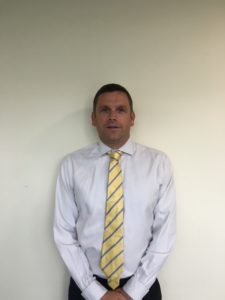
Photo: Piksel | Dreamstime.com
IoT helps London councils save lives, cut fly-tipping and more
18 April 2023
by Sarah Wray
Can the Internet of Things (IoT) improve the local economy in towns, cities and regions? This is what a £4.75 million, multi-year initiative set out to discover back in 2019.
Andrew Parsons, IoT Programme Manager for the InnOvaTe project, believes the trial has ultimately demonstrated how IoT can save lives, change working practices and address real problems – even if its effect on the local economy is less easy to quantify.

InnOvaTe was funded by £4 million (US$4.98 million) from the London Councils Business Rates Retention Scheme, administered by the City of London Corporation, and a contribution of £150,000 per participating council. The boroughs of Croydon, Kingston, Merton, Richmond and Sutton collaborated on the project through the South London Partnership.
Parsons says the original overarching goal of boosting the local economy and retaining businesses was a sticking point in the early phases.
“It’s not a natural fit,” he comments. The pandemic changed things, though, as people were forced to look at new ways of doing things and delivering critical services such as adult social care. Alongside areas such as health, transport and environmental monitoring, the project also went on to incorporate the climate agenda as thinking evolved.
“IoT sensors fit really well with neutral facts that are obtained without really any human intervention,” Parsons says.
He adds: “I think initially people didn’t understand the true diversity of what sensors could deliver. They were obsessed with the ‘thing’. We flipped it almost the opposite way and said: tell us the problems you have across your boroughs, where if you had a piece of data or an insight that would allow you to think in a different way or put a policy in action based on fact.”
Parsons says the team went out and met “every head of service, every assistant director, chief executive and growth director” to ask them about their challenges.
Over 150 ideas were whittled down to almost 50 trials with around 3,000 sensors, based on criteria including purpose, impact, ethics, and level of commitment.
Successes
Parsons highlights several areas that have been particularly successful.
One is adult social care, spurred by a rise in demand during the pandemic at the same time as in-person contact had to be minimised. In Sutton, battery-powered sensors, connected via a low-power, wide-area network (LPWAN), were delivered to vulnerable social housing residents through letterboxes, with no plugs, wires or configuration required and no need for an in-home internet connection.
The sensors monitor atmospheric changes in homes and have already been credited with helping to save the lives of at least four people. As well as detecting changes in routine that could indicate a fall or other problem, the system has also flagged up issues such as fuel poverty and mould and damp risk.
Parsons says the trial has proved so successful that Sutton has reworked its analogue-to-digital telecare tender and is making it compulsory for sensors to go into all 512 vulnerable residents’ homes.
Residents can’t opt out although Parsons acknowledges they can put the devices away in a cupboard “if they really want to”.
Kingston and Richmond are now also using the sensors, which can also be used to ‘right size’ care packages as people return home from hospital.
Surprises
Other successful use cases have included using flooding sensors in hotspots to monitor drains and gulleys without staff having to do in-person checks. These have improved preventative cleaning schedules and councils are now able to adjust large service contracts to ensure better focus on the areas that need it.
In addition, fly tipping has been reduced by as much as 80 percent in problem areas across Kingston that have been fitted with camera sensors using AI analytics.
One surprise result was the monitoring of waste transfer sites in Merton for noise and dust, which can trigger complaints from residents. Real-time information lets site managers know when sprinklers and other interventions are needed – conditions have improved by between 18 percent and 48 percent across three of the largest sites.
“It’s probably been one of our biggest success stories,” says Parsons. “Really unexpected, though it probably shouldn’t have been with hindsight.”
Parsons recounts a situation where council officers came in one morning to “utter carnage” in their email inboxes about dust. They were perplexed as sensors confirmed the particulate levels but there had been no waste vehicles on the site in question. Conversations with community colleagues revealed that illegal street racing had taken place the day before in the area.
The council was able to go back to residents to let them know the police had been informed about the street racing and the waste sites were not to blame. Parsons says it’s another example of “perspective, with facts above everything else”.
Limits
Some deployments served their purpose for a limited time and others failed to gain as much traction as was hoped.
For example, during the height of the pandemic, people flocked to parks and sensors were used to measure footfall to ensure bins were emptied and toilets were cleaned as needed. As people have returned to normal routines, this is no longer necessary.
“It’s been quite an expensive investment that was successful at the time but hasn’t then worked. The world around us has changed,” Parsons comments.
Another promising concept that struggled is using sensor data to support independent high streets.
While some aspects have been successful, Parsons says: “It’s highlighted that various shop owners, business improvement districts and parts of the councils cannot play very well together at times. And that one’s failed because ultimately they couldn’t collectively agree how to use the data. It reached ‘no man’s land’.”
Where next?
Sixty to seventy percent of the use cases that were trialled are already being continued as part of ongoing operations and incorporated into budgets – “they’ve been accepted into business as usual,” Parsons says. Evaluation is ongoing, so more could be added.
“I think I would say success is also that we’ve truly opened people’s eyes to the prospect of technology being an answer for neutral data,” he comments.
“Damp, mould, vulnerable residents: they aren’t things we necessarily thought of before. And saving lives with something that costs £8 a month. That’s pretty impressive when you think about sickness, mental health and all the other impacts.”
For the project, Microsoft and Hitachi built a data platform which integrates and visualises non-personal data from all the sensors, meaning various types of data can be overlaid and information can be viewed across boroughs.
“At the most senior level now, committee papers are not going forward without neutral and baseline data having been obtained,” Parsons says. “Because the establishment of baseline data is accessible and affordable.”
He says this data also makes it easier for people to hold councils accountable for their pledges – such as to reduce traffic or improve air quality.
‘Give it a go’
Principles developed through the programme include that personal data is not stored, security and privacy must be designed in from the start, all data generated must be publicly owned, and partners must agree to the principles.
Parsons says there has been high interest in the project from other local authorities, housing providers and national governments.
“The world is looking at IoT but they’re a bit scared and apprehensive of the unknown,” he says.
His major takeaway is about people, rather than technology.
“You’ve got to have senior, genuinely committed staff that are willing to sponsor things,” he says, explaining that this means leaders at the chief executive and director level who will get behind IoT projects.
This can be challenging when there are elections, job changes or shifting priorities.
This was also reflected in a report by the University of Essex about the InnOvaTe project, which found that: “The engagement of officers and internal stakeholders remains a key predictor of whether a use case (trial/pilot) will generate insights”. The report also highlights the importance of a clear and shared vision, public communications, co-ordination, and data visualisation.
In addition, Parsons says: “You mustn’t be too prescriptive. Where it’s failed, as far as I can see, is often when somebody’s picked the tech not the problem. They’ve also not been willing to try things.”
Parsons points out that some IoT use cases mean doing things in a new way for the first time.
He advises weighing up the costs, time and risk profile before “giving it a go”, gathering feedback and working from there.
His advice to other cities? “Please don’t be held back by overthinking this.”







